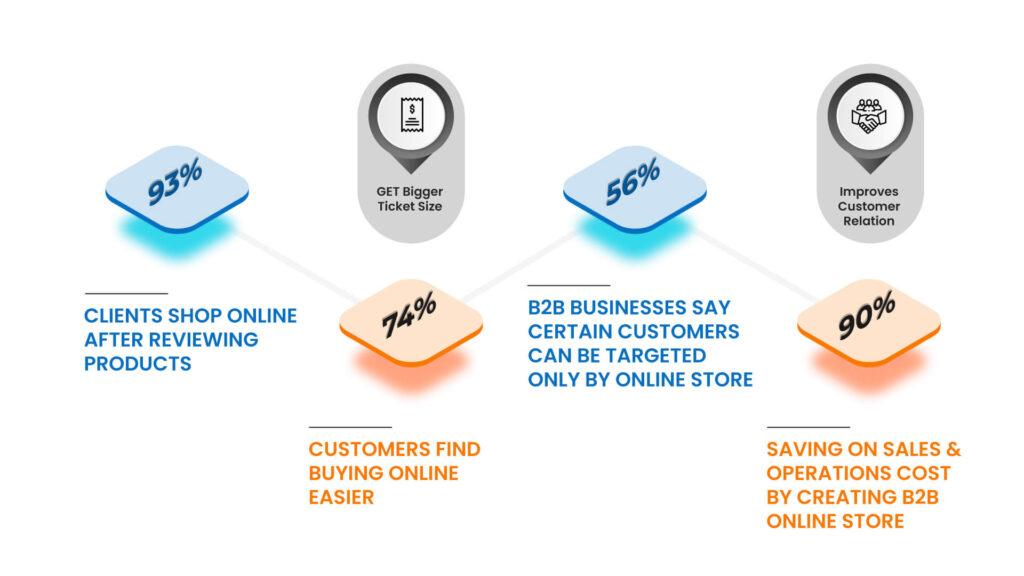Unlock the potential of your business with the right email marketing platform! Discover our guide to the 14 best options that can elevate your campaigns, engage your audience, and drive conversions. Transform your outreach and watch your success soar!
A Guide to the 14 Best Email Marketing Platforms
In today’s fast-paced digital landscape, where attention spans are fleeting and competition is fierce, effective communication is more crucial than ever. Email marketing stands out as one of the most powerful tools at your disposal, capable of fostering genuine connections, driving engagement, and elevating your brand to new heights. But with an overwhelming number of email marketing platforms available, how do you choose the right one to transform your vision into reality?
Welcome to our comprehensive guide on the 14 best email marketing platforms that promise to revolutionize your outreach efforts. Whether you’re a small business owner seeking to expand your customer base, a seasoned marketer looking to optimize your campaigns, or an entrepreneur aiming to create lasting relationships with your audience, this guide will illuminate the path to finding the perfect match for your needs.
Join us as we explore user-friendly interfaces, powerful automation features, and innovative tools designed to amplify your message. With the right platform by your side, you’ll not only capture attention but also inspire action. Ready to unlock the full potential of your email marketing strategy? Let’s dive in!
Choosing the Right Email Marketing Platform for Your Needs
When selecting an email marketing platform, it’s essential to align the features and capabilities with your specific business goals. The right tool can significantly enhance your marketing efforts, allowing you to connect, engage, and convert your audience more effectively. Here are some key factors to consider:
- User-Friendly Interface: A platform that’s intuitive and easy to navigate will save you valuable time and reduce frustration. Look for drag-and-drop editors that allow you to create beautiful email campaigns effortlessly.
- Automation Features: Automated workflows can help you nurture leads and keep your audience engaged without the need for constant manual effort. Consider platforms that offer robust automation tools, such as autoresponders and triggered emails.
- Segmentation and Targeting: The ability to segment your audience based on demographics, behavior, or past interactions can lead to more personalized and effective campaigns. Choose a platform that facilitates detailed segmentation options.
- Analytics and Reporting: To measure success, you need actionable insights. Opt for platforms that provide comprehensive analytics, allowing you to track open rates, click-through rates, and conversions.
Another critical aspect is integration capabilities. Your email marketing platform should seamlessly integrate with your existing tools, such as CRM systems, e-commerce platforms, and social media channels. This integration ensures a cohesive marketing strategy and streamlines your workflow.
| Platform | Key Feature | Best For |
|---|---|---|
| Mailchimp | All-in-one Marketing Platform | Small to Medium Businesses |
| Constant Contact | Event Marketing | Event Planners |
| ActiveCampaign | Advanced Automation | Growing Businesses |
| Sendinblue | SMS Marketing | Multi-Channel Marketers |
Lastly, consider your budget. Many platforms offer tiered pricing models, so identify what features are essential for your business and what fits within your budget. Investing in the right platform today can lead to greater returns in the future through improved customer engagement and conversion rates.
Ultimately, the best email marketing platform will be one that not only meets your current needs but also grows with you. Take the time to assess your options, read reviews, and even test free trials to ensure you choose a platform that empowers your marketing vision and drives your business forward.

Unleashing the Power of Automation in Your Campaigns
In the fast-paced world of digital marketing, automation is no longer just a luxury; it’s a necessity. Streamlining your email campaigns not only enhances efficiency but also significantly boosts your engagement rates. Imagine sending personalized messages to thousands of customers with just a few clicks! This is the magic that automation brings to your marketing strategy. By leveraging automation, you can ensure that your audience receives timely content tailored to their specific needs and interests.
One of the most impactful ways to utilize automation is through trigger-based emails. These are messages that are automatically sent based on user behavior, such as signing up for a newsletter or abandoning a shopping cart. This approach guarantees that your communications are not only relevant but also timely, leading to increased conversions. Consider the following examples of effective trigger-based strategies:
- Welcome Emails: Greet new subscribers with a warm message that sets the tone for your relationship.
- Abandoned Cart Reminders: Remind customers of the items they left behind, encouraging them to complete their purchase.
- Re-Engagement Campaigns: Target inactive subscribers with special offers to revive their interest in your brand.
Moreover, automation allows you to segment your audience effectively, which is crucial for delivering personalized content. By categorizing your subscribers based on their preferences, behaviors, and demographics, you can create highly targeted campaigns. For instance, a platform that facilitates smart segmentation can help you achieve the following:
- Send promotions to loyal customers based on their purchase history.
- Deliver tailored content to different age groups or geographical locations.
- Encourage feedback from users based on their interaction with previous emails.
To truly harness the potential of automation, choose an email marketing platform that offers advanced features, including A/B testing and analytics. These tools enable you to optimize your campaigns continuously by analyzing which messages resonate most with your audience. Here’s a simple overview of essential features to consider:
| Feature | Description |
|---|---|
| Workflow Automation | Streamlines repetitive tasks and sends emails based on user actions. |
| Advanced Analytics | Provides insights into open rates, click-through rates, and user engagement. |
| Dynamic Content | Personalizes emails based on subscriber data for tailored experiences. |
By adopting automation in your email marketing campaigns, you’re not merely keeping up with trends; you’re positioning your brand as a leader in customer engagement. The ability to reach out to your audience with the right message at the right time is a game-changer. Embracing these technologies will not only save you valuable time but also foster deeper connections with your audience, ultimately driving growth and success for your business.

Exploring User-Friendly Interfaces for Seamless Experience
In today’s fast-paced digital landscape, the user interface of an email marketing platform can significantly impact your marketing strategy. A clean and intuitive design not only enhances user engagement but also ensures that you spend less time fumbling through complex menus and more time crafting compelling content that resonates with your audience.
When evaluating email marketing platforms, consider those that prioritize usability. Look for features that offer drag-and-drop editors, allowing you to design stunning newsletters without any coding knowledge. This functionality can save you hours of frustration and empower you to bring your creative vision to life effortlessly.
- Customizable Templates: Platforms that provide a library of customizable templates can help streamline your design process. Tailoring these templates to fit your brand’s aesthetic ensures a cohesive look across all communications.
- Mobile Responsiveness: With a significant number of users accessing emails on mobile devices, your platform should guarantee that your campaigns look flawless on any screen size. Responsive design is not just an option; it’s a necessity.
- User Support and Tutorials: Comprehensive support, including tutorials and customer service, is crucial. A platform that offers easy access to resources can enhance your experience and help you troubleshoot issues quickly.
Moreover, consider how easily you can segment your audience. A user-friendly interface should make it simple to create targeted lists based on user behavior and preferences. This capability allows you to deliver personalized content that boosts engagement and conversion rates.
To further illustrate the importance of user-friendly interfaces, let’s examine a comparison of some popular email marketing platforms:
| Platform | User Interface Rating | Key Features |
|---|---|---|
| Mailchimp | ⭐⭐⭐⭐⭐ | Drag-and-drop editor, extensive template library |
| Constant Contact | ⭐⭐⭐⭐ | Mobile-friendly designs, social media integration |
| SendinBlue | ⭐⭐⭐⭐⭐ | Advanced segmentation, SMS marketing included |
| AWeber | ⭐⭐⭐⭐ | Customizable automation, detailed analytics |
Ultimately, the right email marketing platform will not only support your needs but also inspire creativity and innovation. By choosing a platform with a user-friendly interface, you can focus on what truly matters: building relationships with your audience and driving results.
Integrating Email Marketing with Your Business Tools
Email marketing is no longer just a standalone strategy; it’s an essential component of a larger toolkit that can elevate your business to new heights. By seamlessly integrating email marketing platforms with your existing business tools, you not only streamline your processes but also enhance the overall customer experience. Imagine the power of having your email campaigns automatically sync with your Customer Relationship Management (CRM) system or e-commerce platform, allowing you to send targeted messages based on real-time data.
To achieve this integration, consider the following key tools that can enhance your email marketing efforts:
- CRM Systems: Syncing your email marketing platform with a CRM like Salesforce or HubSpot helps you manage customer relationships more effectively, tailoring your communications based on user behavior and preferences.
- E-commerce Platforms: Integrating with systems such as Shopify or WooCommerce allows you to send automated follow-ups, abandoned cart reminders, and personalized product recommendations, driving conversions effortlessly.
- Social Media Management Tools: Link platforms like Hootsuite or Buffer to your email campaigns to ensure your messaging is consistent across all channels, amplifying your reach and engagement.
Moreover, analytics tools can significantly boost your email marketing effectiveness. By integrating your email platform with analytics software such as Google Analytics, you can gain valuable insights into how your emails are performing, identifying trends and optimizing your content based on what resonates with your audience. This data-driven approach enables you to refine your strategies and ultimately achieve better results.
| Integration Tool | Benefits |
|---|---|
| Salesforce | Enhanced customer targeting and relationship management. |
| Shopify | Boosted sales through automated follow-ups and personalized messages. |
| Google Analytics | In-depth insights for optimizing email campaigns. |
| Zapier | Automated workflows that connect various tools effortlessly. |
As you embark on integrating your email marketing with other business tools, remember that the goal is to create a cohesive ecosystem that supports your marketing initiatives. By leveraging these integrations, you free up valuable resources, enabling your team to focus on strategy and creativity rather than tedious manual tasks. In turn, this allows you to craft more engaging and personalized customer experiences, which are crucial in today’s competitive landscape.
Your email marketing platform should be the heart of your digital marketing strategy. With the right integrations, it transforms into a powerful engine that drives business growth. Embrace this opportunity to elevate your marketing game, and watch as your engagement rates and conversion metrics soar.
Customizing Your Messages for Maximum Engagement
To truly captivate your audience and drive engagement through email marketing, personalization is key. By customizing your messages, you can create a deeper connection with your recipients, encouraging them to interact with your content. Here are some powerful strategies to enhance your email marketing efforts:
- Segment Your Audience: Divide your email list into specific segments based on demographics, purchase history, or engagement levels. This allows you to tailor your messages to meet the unique needs and interests of each group.
- Use Dynamic Content: Incorporate dynamic content that changes based on the recipient’s profile or behavior. For instance, display different product recommendations based on previous purchases or browsing history.
- Personalize Subject Lines: Craft subject lines that include the recipient’s name or reference their interests. A compelling subject line can significantly increase open rates.
- Craft Relevant Offers: Tailor your promotions to align with the recipient’s preferences. For example, if a customer frequently buys athletic gear, offer them a special discount on new sportswear.
- Utilize Behavioral Triggers: Set up automated emails that are triggered by specific actions, such as cart abandonment or newsletter signups. This approach ensures timely, relevant communications.
Moreover, consider the tone and style of your messaging. Craft messages that resonate with your audience’s values and aspirations. A conversational tone often fosters a sense of community and approachability, making readers feel valued and understood.
Another powerful tactic is to incorporate storytelling into your emails. Share customer success stories or testimonials that illustrate how your product or service has positively impacted lives. This not only builds trust but also motivates recipients to envision the benefits for themselves.
| Strategy | Benefits |
|---|---|
| Audience Segmentation | Increased relevance and engagement |
| Dynamic Content | Enhanced user experience |
| Behavioral Triggers | Timely and relevant interactions |
| Personalized Offers | Higher conversion rates |
| Storytelling | Emotional connection and brand loyalty |
Lastly, don’t forget to analyze the results of your email campaigns. Tracking metrics like open rates, click-through rates, and conversions gives you valuable insights into what resonates with your audience. Use this data to continuously refine and enhance your strategies for maximum impact.

Analyzing Performance Metrics to Drive Success
To truly harness the power of email marketing, it’s imperative to dive deep into performance metrics. These metrics serve as a compass, guiding marketers toward successful strategies that yield tangible results. By closely scrutinizing key indicators, brands can fine-tune their campaigns, ensuring each email resonates with its audience.
Open Rates are one of the most telling metrics in email marketing. A high open rate indicates that your subject line and sender name are effectively capturing attention. To boost this metric, consider A/B testing different subject lines and personalizing the sender name. It’s not just about getting your emails opened; it’s about making the click-through inevitable.
Next up is the Click-Through Rate (CTR). This metric reveals the effectiveness of your email content. Analyzing CTR allows you to understand which elements of your email—be it images, call-to-action buttons, or text—are driving engagement. When you identify high-performing elements, replicate their success in future campaigns and watch your engagement soar.
Conversion Rates are perhaps the most critical metric for any email marketing campaign. They measure how many recipients took the desired action after clicking through your email. Whether it’s signing up for a webinar, making a purchase, or downloading a resource, tracking conversions will help you understand your email’s impact on your bottom line. Use this data to tweak your offers and messaging to better meet your audience’s needs.
Another essential metric to consider is Unsubscribe Rates. While it might sting to see this number rise, it’s crucial feedback. A spike in unsubscribes could signify that your audience is receiving content that isn’t relevant or valuable to them. Use these insights to refine your targeting and ensure you’re delivering content that resonates.
| Metric | What It Indicates | How to Improve |
|---|---|---|
| Open Rate | Subject line effectiveness | A/B test subject lines |
| Click-Through Rate | Content engagement | Optimize CTAs and visuals |
| Conversion Rate | Campaign success | Refine offers and messaging |
| Unsubscribe Rate | Content relevance | Enhance targeting efforts |
Lastly, consider the List Growth Rate. A healthy list is fundamental to the longevity of your email marketing efforts. Track how quickly your subscriber base grows, and analyze the source of new sign-ups. This will help you determine which channels or content types are most effective in attracting new subscribers. Investing in your list’s growth now pays dividends in the future.
By leveraging these performance metrics, brands can craft campaigns that are not only well-received but also drive measurable results. Embrace the insights gleaned from your data, and let them inform your strategies as you work towards achieving marketing success.
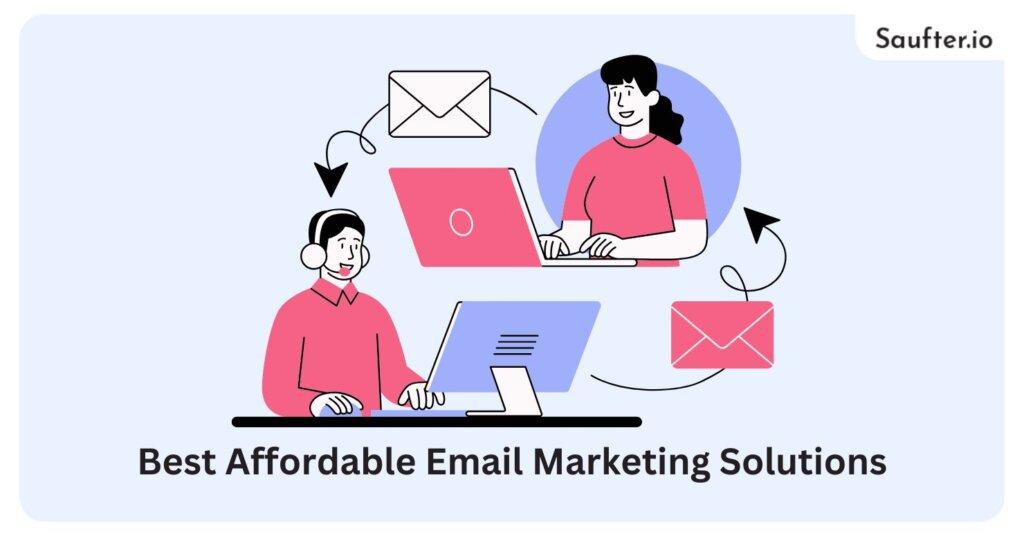
Budget-Friendly Options for Every Business Size
In today’s digital marketplace, effective email marketing is essential, regardless of your business size. Fortunately, there are several platforms that cater to different budgetary needs without compromising on features or performance. Here’s a breakdown of some budget-friendly options that can empower your marketing strategy.
- Mailchimp: Ideal for startups and small businesses, Mailchimp offers a free tier for up to 500 subscribers, making it an accessible choice for those just getting started. Its user-friendly interface and automation features allow businesses to create impactful campaigns without a steep learning curve.
- Sendinblue: Known for its competitive pricing, Sendinblue provides a free plan with a daily sending limit. It includes SMS marketing as well, offering versatile communication options. As your business scales, their pricing becomes increasingly attractive with a range of features.
- MailerLite: With a straightforward approach, MailerLite boasts a free plan for up to 1,000 subscribers. It features a drag-and-drop editor and landing page builder, making it perfect for businesses that need simplicity without sacrificing quality.
- Constant Contact: While not free, Constant Contact offers a 60-day free trial that allows businesses to explore its extensive features. It is particularly beneficial for small businesses seeking robust email marketing combined with event management tools.
For medium-sized businesses looking to maximize their marketing budgets, consider these platforms that seamlessly blend affordability with advanced functionalities:
- AWeber: AWeber provides a 30-day free trial and a tiered pricing model that scales based on your subscriber count. Its comprehensive analytics and split testing options make it an excellent choice for businesses focused on growth.
- GetResponse: With a rich set of features and a free trial, GetResponse is perfect for businesses ready to implement marketing automation. Its user-friendly interface and webinar hosting capabilities give businesses an edge in their marketing efforts.
For larger enterprises that require robust solutions, consider investing in platforms that deliver high-impact features while still being mindful of budgets:
| Platform | Starting Price | Key Features |
|---|---|---|
| ActiveCampaign | $9/month | Email marketing automation, CRM integration, and advanced reporting. |
| HubSpot | $50/month | Comprehensive marketing suite, including email marketing, social media management, and analytics. |
The array of options available ensures that every business, regardless of size, can find an email marketing platform that fits their financial constraints while delivering powerful results. By investing wisely in these tools, you can cultivate customer relationships, enhance brand visibility, and ultimately drive sales—all while staying within your budget.

Harnessing the Potential of Advanced Segmentation
Advanced segmentation allows marketers to dive deeper into their audience’s preferences, behaviors, and needs, transforming email campaigns from simple broadcasts into personalized experiences. By segmenting your email list effectively, you can tailor your messaging to speak directly to the heart of your recipients, making them feel understood and valued. Here’s how you can leverage segmentation to unlock the full potential of your email marketing strategy:
- Demographic Segmentation: Divide your audience based on age, gender, location, and income level to craft messages that resonate with specific groups. For example, a campaign highlighting luxury products may be more effective when targeted towards affluent demographics.
- Behavioral Segmentation: Analyze user behavior such as purchase history, website interactions, and engagement levels. By understanding how users engage with your brand, you can send timely reminders or special offers that encourage repeat business.
- Psychographic Segmentation: This goes beyond basic demographics to explore the attitudes, values, and interests of your audience. Crafting campaigns that align with your audience’s lifestyle can significantly increase engagement and conversion rates.
Moreover, effective segmentation enhances your ability to conduct A/B testing. By creating different segments, you can experiment with various subject lines, content styles, or calls to action to determine what resonates best with each group. This iterative approach not only improves your email performance but also builds a more engaged and loyal subscriber base.
To illustrate the power of segmentation, consider implementing a targeted campaign for a new product launch. Instead of sending a generic announcement to your entire list, segment your audience based on previous purchasing behavior. For instance, you could target:
| Segment | Message Strategy |
|---|---|
| Frequent Buyers | Exclusive first access and limited-time offers |
| Occasional Shoppers | Highlight the product benefits and encourage trial |
| New Subscribers | Welcome series introducing the brand and related products |
As you refine your segmentation strategy, remember that the ultimate goal is to foster a deeper connection with your audience. By sending targeted, relevant content, you not only enhance engagement but also drive higher conversion rates. Personalization is key in today’s digital landscape, and advanced segmentation is your gateway to achieving a more impactful email marketing strategy that resonates with your audience on a personal level.
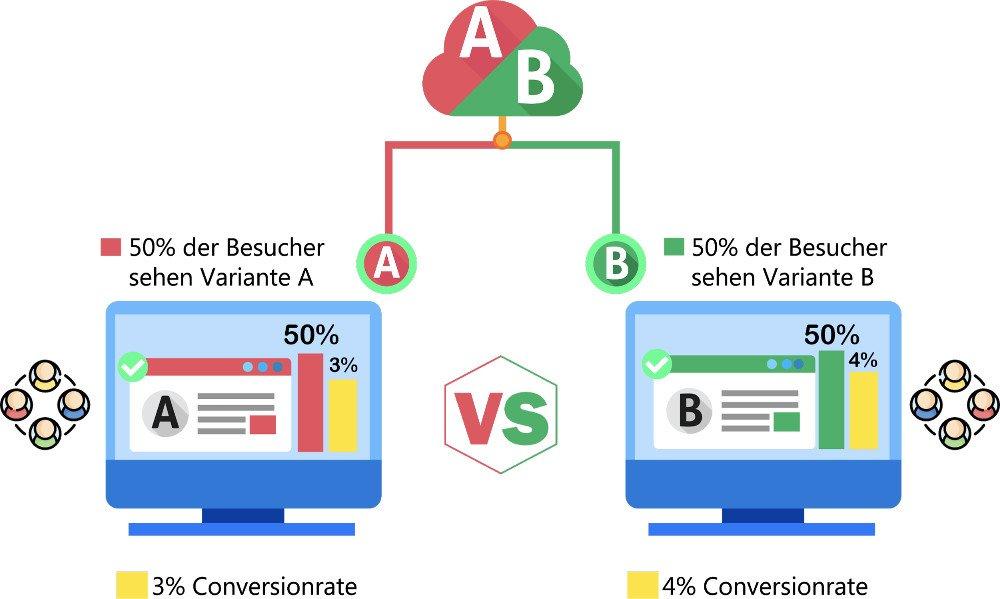
Leveraging A/B Testing for Continuous Improvement
In the fast-paced world of email marketing, staying ahead means constantly refining your strategies. A/B testing presents a powerful opportunity to gather insights and make data-driven decisions that enhance your campaigns. By experimenting with different elements of your emails, you can uncover what resonates best with your audience and fine-tune your approach for maximum impact.
When implementing A/B testing, focus on a few key components:
- Subject Lines: Test variations in length, tone, and wording to see which garners higher open rates.
- Email Layout: Experiment with different designs, images, and call-to-action placements to optimize user engagement.
- Timing: Analyze the best times to send your emails by testing various days and hours.
- Content Types: Compare promotional vs. informative content to determine what drives conversions.
Choose your metrics wisely; tracking the right data is essential for meaningful insights. Metrics such as open rates, click-through rates, and conversion rates will provide a clear picture of your campaigns’ performance. By establishing clear goals for each test, you can better evaluate the outcomes and adapt your future strategies accordingly.
To illustrate the effectiveness of A/B testing, consider the following table, which summarizes the results of a hypothetical email campaign focused on subject line variations:
| Subject Line | Open Rate (%) | Click-Through Rate (%) |
|---|---|---|
| Exclusive Offer Just for You! | 32% | 15% |
| Don’t Miss Out on Our Latest Deals | 28% | 10% |
| Your Monthly Newsletter Awaits | 22% | 5% |
The results clearly indicate that a more personalized and enticing subject line can significantly enhance engagement. By leveraging A/B testing, email marketers can identify winning strategies and replicate success across future campaigns. The beauty of this approach lies in its iterative nature: each test builds upon the last, leading to continuous improvement and a more engaged audience.
Incorporating A/B testing into your email marketing routine not only empowers you to refine your strategies but also cultivates a culture of experimentation. Embrace the process, learn from each test, and allow your findings to guide your marketing efforts. By prioritizing ongoing optimization, you ensure that your campaigns remain relevant, compelling, and successful in driving desired outcomes.

Embracing Mobile Optimization for Modern Audiences
As the digital landscape continues to evolve, mobile optimization has become an essential element in reaching and engaging modern audiences. With more than half of all emails being opened on mobile devices, it’s imperative for marketers to ensure that their content is not only visually appealing but also functional across various screen sizes. This shift in consumer behavior necessitates a strategic approach to email marketing, where mobile-first design is prioritized.
When selecting an email marketing platform, look for features that enhance mobile optimization:
- Responsive Templates: Choose platforms that offer a variety of responsive templates, ensuring that your emails look impeccable on any device, whether it’s a smartphone, tablet, or desktop.
- Mobile Preview: Utilize tools that allow you to preview and test your emails on mobile devices before sending them out. This is crucial for spotting potential formatting issues.
- Easy Navigation: Ensure that call-to-action buttons and links are easily clickable on smaller screens. A well-placed button can significantly enhance user engagement.
- Compact Content: Optimize your content to be concise and impactful. Short paragraphs, bullet points, and visuals can make your emails easier to digest on mobile devices.
One of the standout features that top email marketing platforms offer is the ability to segment audiences based on their device preferences. By understanding which segment of your audience engages more through mobile, you can tailor your email campaigns to better meet their needs. This personalized approach not only boosts engagement rates but also fosters a deeper connection with your audience.
Consider the following table showcasing key factors to evaluate when choosing an email marketing platform for mobile optimization:
| Feature | Importance | Examples of Platforms |
|---|---|---|
| Responsive Design | Critical for accessibility | Mailchimp, Constant Contact |
| Mobile Analytics | Track mobile engagement | Campaign Monitor, HubSpot |
| Integration with Apps | Enhances user experience | SendinBlue, GetResponse |
| Customizable Templates | Brand consistency | Aweber, ActiveCampaign |
Incorporating mobile optimization into your email marketing strategy is not merely a trend but a necessity. By embracing these practices and leveraging the right tools, you position your brand to not only reach but actively engage with modern audiences. Remember, the goal is not just to send emails but to create meaningful connections that resonate with users, wherever they are.
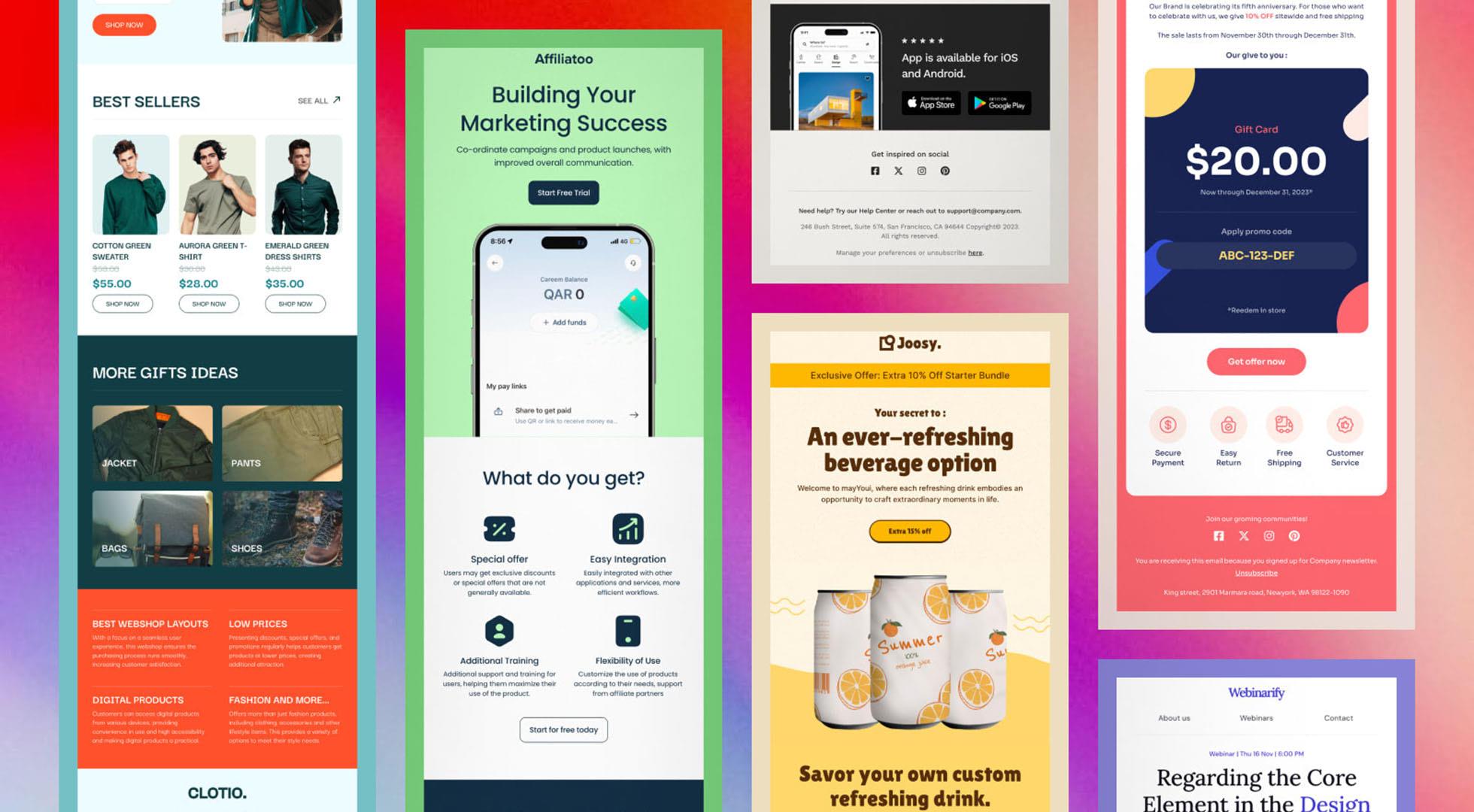
Building Stunning Templates That Capture Attention
Creating email templates that not only meet the technical specifications but also inspire action is essential in today’s digital marketing landscape. A stunning template can be the difference between a subscriber opening your email or letting it slip into the abyss of their inbox. Here are the key elements to consider when designing your email templates.
- Visual Hierarchy: Use size, color, and layout to guide the reader’s eye to the most important elements, such as your call-to-action (CTA) buttons.
- Consistent Branding: Every template should reflect your brand identity. Use your brand colors, logos, and fonts to create cohesion across all communications.
- Mobile Optimization: With a significant number of users checking emails on their smartphones, ensure your templates are responsive and look great on all devices.
Incorporating engaging visuals is another crucial aspect. High-quality images and illustrations can capture attention and convey messages more effectively than text alone. Consider using:
- High-resolution images: Invest in quality imagery that resonates with your audience.
- Infographics: Simplify complex information and make it visually appealing.
- GIFs or videos: Add dynamic elements to engage and entertain your readers.
Moreover, personalization goes a long way in creating an emotional connection with your audience. Utilize data to segment your email list and customize your templates. This can include:
- Dynamic content: Tailor content based on user behavior or preferences.
- Personalized greetings: Use the recipient’s name to create a sense of familiarity.
- Targeted offers: Send promotions that align with individual interests.
| Element | Importance |
|---|---|
| Clear Call-to-Action | Increases conversion rates |
| Engaging Subject Line | Boosts open rates |
| A/B Testing | Refines template effectiveness |
Ultimately, the best templates are those that not only look good but also drive results. By focusing on user experience, utilizing compelling visuals, and ensuring personalization, you can create email templates that not only capture attention but also inspire action. Embrace creativity and experimentation in your template designs, and watch your engagement rates soar.

Exploring Customer Support and Community Resources
When diving into the world of email marketing platforms, having robust customer support and community resources can be a game-changer. These elements not only enhance user experience but also empower marketers to maximize their potential. Here, we explore the key aspects of customer support and community resources that can elevate your email marketing efforts.
Comprehensive Customer Support
Top-tier email marketing platforms understand the importance of offering comprehensive customer support. Look for platforms that provide:
- 24/7 Live Chat: Immediate assistance can be crucial when facing issues.
- Email and Phone Support: Direct lines to knowledgeable representatives ensure you get the help you need.
- Help Centers and FAQs: Self-service resources that cover common queries and troubleshooting steps.
Community Resources and Engagement
Building a strong community around email marketing can foster innovation and collaboration. Consider platforms that offer:
- User Forums: Places where marketers can share experiences, tips, and best practices.
- Webinars and Tutorials: Educational resources that help users get the most out of their tools.
- Social Media Groups: Active communities where users exchange ideas and support one another.
Comparison of Support Features
| Email Marketing Platform | 24/7 Support | User Community |
|---|---|---|
| Platform A | ✔ | ✔ |
| Platform B | ✖ | ✔ |
| Platform C | ✔ | ✖ |
Utilizing these customer support features and community resources not only enhances user satisfaction but also leads to better marketing outcomes. Engaging with other users can provide insights that you may not find in standard documentation, making your email campaigns more effective and innovative.
In a landscape where every click counts, ensuring you have the right support and community backing can pave the way for successful email marketing strategies. Choose wisely and let these resources guide your journey towards achieving marketing excellence.
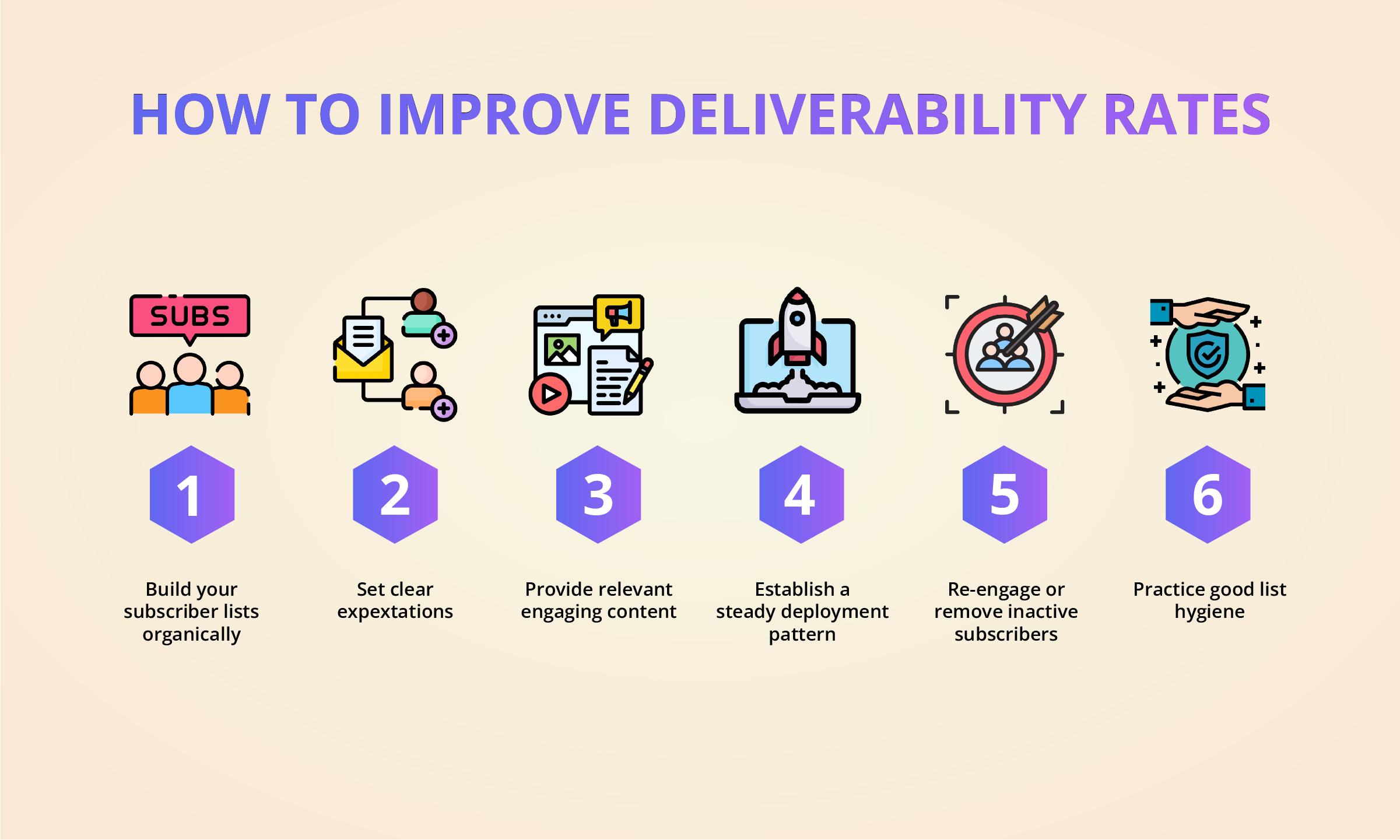
Understanding Deliverability Rates for Better Reach
When diving into the realm of email marketing, understanding deliverability rates is crucial for maximizing your outreach. Deliverability refers to the percentage of emails that reach the inbox rather than being lost in spam folders or bounced back. A high deliverability rate ensures that your message is seen by your audience, which translates to better engagement and conversions.
Several factors influence deliverability rates, including:
- Sender Reputation: Internet Service Providers (ISPs) monitor the sending behavior of email addresses. Maintaining a clean list and sending relevant content can enhance your reputation.
- Content Quality: Emails that offer value and foster engagement are less likely to be flagged as spam. Focus on crafting compelling subject lines and relevant body content.
- List Hygiene: Regularly cleaning your email list to remove inactive subscribers can significantly improve your rates. A smaller, engaged audience is far more valuable than a large, disinterested one.
- Authentication Protocols: Implementing SPF, DKIM, and DMARC can help confirm your identity as a sender, reducing the chances of your emails being classified as spam.
Understanding these elements can empower marketers to achieve higher deliverability rates. Here’s a quick overview of common deliverability benchmarks:
| Metric | Industry Standard | Best Practice |
|---|---|---|
| Delivery Rate | 95% | 98%+ |
| Open Rate | 20% – 30% | 30%+ |
| Click-Through Rate | 1% – 5% | 5%+ |
| Unsubscribe Rate | 0.5% – 1% | 0.1% or lower |
To boost your deliverability, consider implementing the following strategies:
- Test Your Emails: Before sending out campaigns, use testing tools to check how your emails perform against spam filters.
- Segment Your Audience: Tailor your content to different segments of your audience to increase relevance and engagement.
- Monitor Analytics: Keep an eye on your campaign metrics to identify trends and areas for improvement.
- Engage Regularly: Consistency in sending can help maintain your reputation and keep your audience engaged.
By understanding and improving your deliverability rates, you can ensure that your emails not only reach your subscribers but also resonate with them, ultimately leading to stronger relationships and enhanced marketing success.
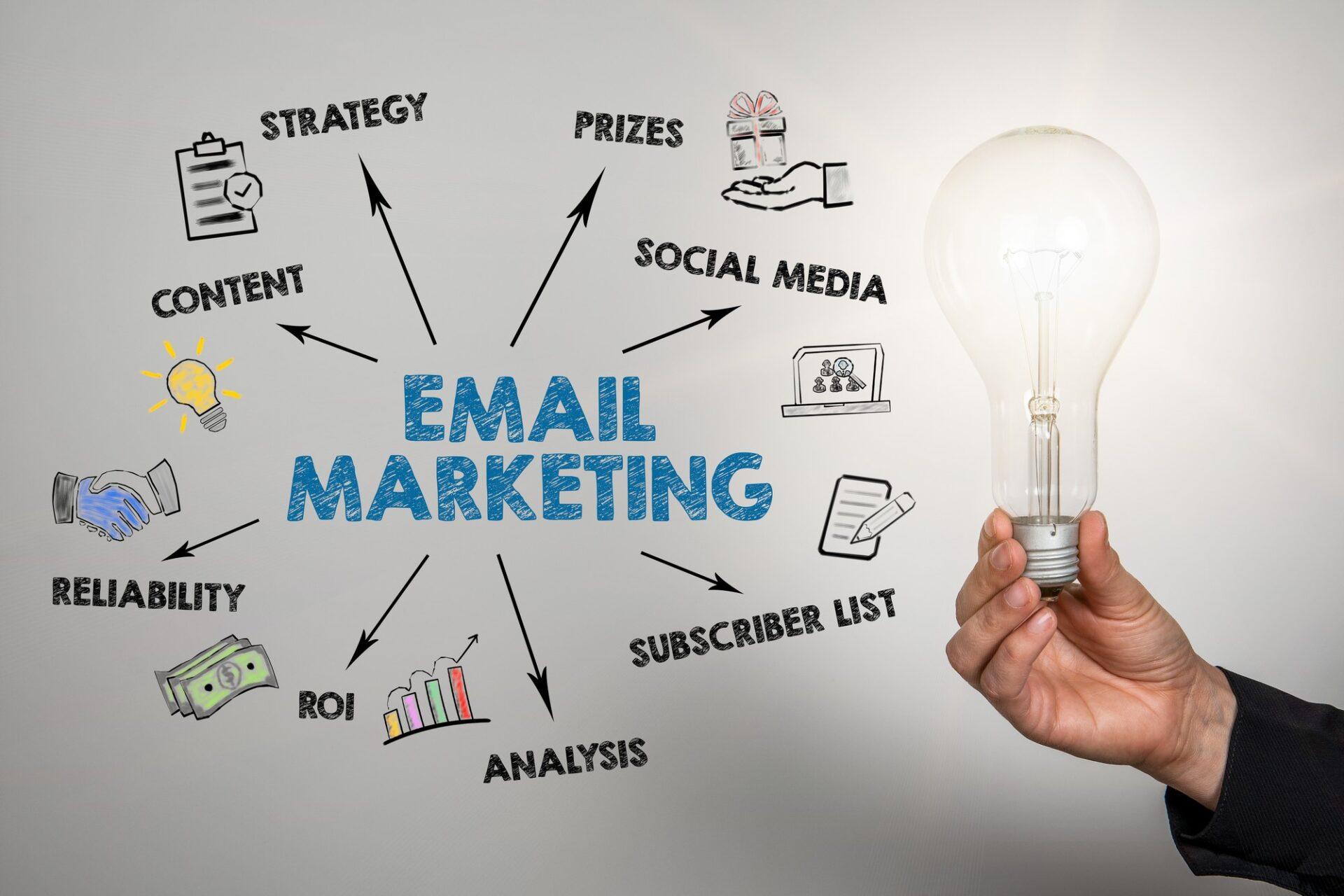
The Future of Email Marketing: Trends to Watch
Email marketing is on the brink of transformation, driven by evolving consumer expectations and technological advancements. As businesses strive to connect with their audiences, several key trends are emerging that will shape the future landscape of email marketing.
Personalization and AI Integration
In an era where consumers crave tailored experiences, personalization in email marketing has never been more critical. Leveraging Artificial Intelligence (AI), brands can analyze user data to create hyper-personalized email campaigns. This includes:
- Dynamic content based on user behavior
- Automated segmentation for targeted messaging
- Predictive analytics to anticipate customer needs
As a result, businesses that embrace these technologies will not only enhance engagement but also drive conversions significantly.
Interactive Email Elements
Gone are the days of static emails. The future lies in interactivity. Incorporating elements such as polls, quizzes, and animations can elevate the user experience. This not only captures attention but also encourages recipients to engage directly within their inboxes. Consider using:
- Embedded videos for storytelling
- GIFs to spark interest and maintain engagement
- Buttons linking to promotions or landing pages
Interactive content fosters a dynamic relationship between brands and consumers, making emails feel less like advertisements and more like conversations.
Mobile Optimization
With the surge in mobile device usage for checking emails, ensuring that campaigns are mobile-responsive is a must. Studies show that over 50% of emails are opened on mobile devices, which underscores the importance of:
- Responsive design to adapt to various screen sizes
- Concise subject lines and clear calls-to-action
- Quick loading times for images and content
Optimizing for mobile can drastically reduce unsubscribe rates and improve overall user experience.
Emphasis on Data Privacy
As data privacy regulations tighten globally, gaining and maintaining consumer trust is paramount. Brands must prioritize transparent data practices and ensure compliance with regulations like GDPR and CCPA. This includes:
- Clear opt-in processes for subscribers
- Regularly updating privacy policies
- Respecting unsubscribe requests promptly
Building a reputation for ethical data use can differentiate brands in a crowded marketplace.
Increased Use of Automation
Automation is reshaping how businesses manage their email campaigns. By employing advanced automation tools, brands can deliver timely and relevant content without manual intervention. Key benefits include:
- Triggered emails based on user actions (e.g., cart abandonment)
- Drip campaigns that nurture leads over time
- Performance tracking to optimize future campaigns
Automation frees up resources, allowing marketers to focus on strategy and creative development.
| Trend | Description | Benefit |
|---|---|---|
| Personalization | Using AI for tailored email content | Enhanced engagement and conversions |
| Interactivity | Incorporating polls and quizzes | Improved user experience |
| Mobile Optimization | Responsive email designs | Higher open rates on mobile |
| Data Privacy | Transparency in data usage | Increased consumer trust |
| Automation | Streamlined campaign management | Efficiency and effectiveness in execution |
Frequently Asked Questions (FAQ)
Q&A: A Guide to the 14 Best Email Marketing Platforms
Q: Why is email marketing still relevant in today’s digital landscape?
A: Email marketing remains one of the most effective forms of communication in the digital age. Unlike social media, which can be fleeting and unpredictable, emails land directly in your audience’s inbox, allowing for personalized and direct engagement. With a staggering ROI of $42 for every $1 spent, email marketing not only builds relationships but also drives conversions that can propel your business forward.
Q: What should I consider when choosing an email marketing platform?
A: When selecting an email marketing platform, think about your business goals and target audience. Consider features like automation, analytics, user-friendliness, and integration capabilities with your existing tools. The right platform should empower you to create beautiful, engaging campaigns effortlessly, ensuring that every email resonates with your audience.
Q: What are some standout features to look for in an email marketing platform?
A: Look for features such as customizable templates, A/B testing, advanced segmentation, and automation workflows. These tools not only save you time but also enhance your ability to tailor messages to specific audience segments, increasing engagement and boosting your overall campaign effectiveness.
Q: How can I use these platforms to improve customer engagement?
A: Utilize the data-driven insights provided by these platforms to understand your audience better. Craft targeted campaigns based on user behavior, preferences, and feedback. Engage your audience with personalized content, dynamic email features, and timely follow-ups. Remember, the key is to create value for your subscribers; when they feel appreciated, they will respond positively!
Q: Can I really automate my email marketing efforts?
A: Absolutely! Most email marketing platforms offer powerful automation features that allow you to set up welcome emails, drip campaigns, and re-engagement sequences effortlessly. Automation not only saves you time but also ensures that your communications are timely and relevant, helping you nurture leads and maintain customer relationships more effectively.
Q: How can I measure the success of my email campaigns?
A: Success can be measured through various metrics such as open rates, click-through rates, conversion rates, and unsubscribe rates. Most email marketing platforms provide comprehensive analytics dashboards that allow you to track these metrics in real time. By analyzing the data, you can refine your strategy, making informed decisions that drive even greater results.
Q: What are some of the top email marketing platforms worth considering?
A: Some of the leading platforms include Mailchimp, Constant Contact, Sendinblue, and ActiveCampaign, each offering unique features tailored to different business needs. Our guide dives into the strengths and weaknesses of each platform, helping you find the perfect fit for your goals.
Q: Are there any budget-friendly options for small businesses?
A: Absolutely! Many email marketing platforms offer free tiers or affordable pricing plans designed specifically for small businesses. Platforms like MailerLite and Sendinblue provide robust features without breaking the bank, allowing you to launch effective email campaigns without vast resources.
Q: How can I ensure my emails don’t end up in the spam folder?
A: To avoid the spam folder, focus on building a quality email list with engaged subscribers. Always use double opt-in methods, craft compelling subject lines, and provide value in your content. Additionally, utilizing a reputable email marketing platform can help ensure higher deliverability rates with their established sender reputations.
Q: What’s the ultimate takeaway for readers considering email marketing?
A: Embrace the power of email marketing as a vital tool for growth. With the right platform and strategy, you can create meaningful connections with your audience, drive conversions, and ultimately elevate your business to new heights. Don’t hesitate—dive into the world of email marketing and unleash your brand’s potential today!
Final Thoughts
choosing the right email marketing platform is a pivotal step in elevating your brand and engaging with your audience like never before. Each of the 14 platforms we’ve explored offers unique features and capabilities tailored to meet diverse business needs. Whether you’re a small startup aiming to foster personal connections or a large enterprise seeking to streamline vast campaigns, the perfect tool is out there waiting for you.
Embrace the power of email marketing to not only reach your customers but to resonate with them. Remember, every email is an opportunity—a chance to tell your story, share your vision, and inspire your audience to take action. As you embark on this journey, keep in mind that the right platform can transform your efforts from mere communication to meaningful connections that drive growth and loyalty.
Now is the time to take action! Dive into the options, test the platforms, and find the one that aligns with your goals. Your email marketing success story begins today. Let your creativity flow, engage your audience, and watch your business thrive. The world of email marketing awaits; seize the opportunity and make your mark!
